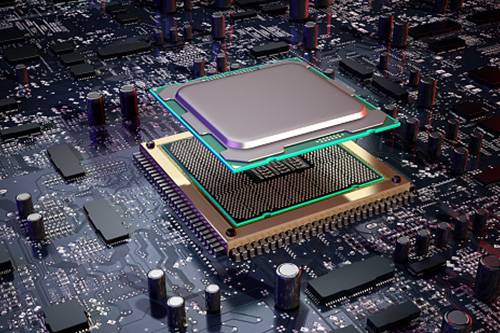Increasing demands for higher-performance computing mean that the cloud-based computing needs to ratchet up its performance too. Microsoft Azure has introduced more capable compute virtual machines (VMs) that take advantage of the latest from AMD EPYC™ processors. This means that developers can easily spin up VMs that normally cost thousands of dollars if they were to purchase their physical equivalents.
This story's focus is on two of Azure's series: HBv3 and NVv4. In most cases, a single virtual machine is used to take advantage of all its resources. High-performance examples of Azure HBv3 series VMs are optimized for HPC applications, such as fluid dynamics, explicit and implicit finite element analysis, weather modeling, seismic processing, and various simulation tasks. HBv3 VMs feature up to 120 Third-Generation AMD EPYC™ 7v73X-series CPU cores with more than 450 GB of RAM. This series of VMs has processor clock frequencies up to 3.5GHz. All HBv3-series VMs feature 200Gb/sec HDR InfiniBand switches to enable supercomputer-scale HPC workloads. The VMs are connected and optimized to deliver the most consistent performance. Get more information about AMD EPYC™ and Microsoft Azure virtual machines.
A Dutch construction company, TBI, is using the Azure NVv4 to run computer-aided design and building modeling tasks on a series of virtual Windows desktops. The NVv4 VMs are only available running Windows powered by from four to 32 AMD EPYC™ vCPUs and offering a partial to full AMD Instinct™ M125 GPU with memory ranging from 2GB to 17GB. Previous generations of NV instances used Intel CPUs and NVIDIA GPUs that offer less performance.
TBI chose this solution because it was cheaper, easier to support and keep its software collection updated. Using virtual desktops meant that no client data was stored on any laptops, making things more secure. Also, these instances delivered equivalent performance, taking advantage of the SR-IOV technology.
Supermicro offers a wide range of servers that incorporate the AMD EPYC™ CPU and a number of servers optimized for applications that use GPUs. These servers range from 1U rackmount servers to high end 4U GPU optimized systems. Whether you’re using it on-prem or you’re building your own cloud, Supermicro’s Aplus servers are optimized for performance and technical computing applications and they run Azure and other systems well. Get more information about Supermicro servers with AMD’s EPYC™ CPUs.



